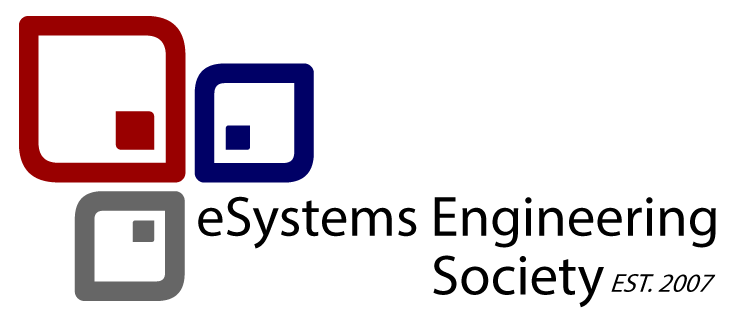(Aviation 4.0 and Renewable Energy)
This special session is organised and supported by the following educational partner
-
Federation University Australia
Session Chair:
- Prof. Talal Yusaf, Federation University Australia, Australia
Synopsis:
Industry 4.0 refers to the fourth industrial revolution, where smart digital technologies streamline, enhance and automate systems and processes. While the previous industrial revolution adopted information technology and robots, the present era leverages integrated and interconnected intelligent digital technologies (computing and internet) that are capable of sharing information and making decisions. Aviation 4.0 has a clear focus on developing sustainable, environmentally friendly technologies, sustainable fuels, Hydrogen, and processes that aim to minimise pollution and achieve zero carbon emissions.
The key technologies of Industry and Aviation 4.0 impacting aviation are: the Internet of Things (IoT), Cloud technologies, Cyber security (including blockchain), Advanced analytics, Digital reality & Simulation, Additive manufacturing, Automated robotics & Artificial intelligence, and Big Data. Each of these technologies support and enhance operations in the aviation and aerospace industry.
The aim of this session is to address issues related to what the industry needs in five years from now, including sustainable energy. Additionally, researcher institutions can contribute in upskilling technician skills to be a qualified technologist that can deal with Industry and Aviation 4.0.
Topics:
If it is needed, the speaker can pay special attention to Aviation 4.0.
The aviation industry prioritises passenger safety and is quick to adopt any technology that can improve and enhance this priority. Hence, the technologies of Industry 4.0 are perfect drivers for Aviation 4.0. The list below, as summarised in Table 1, is based on a Deloitte report[1] and is not exhaustive, but indicative of how these technologies could benefit the aviation industry.
Appendix
- Internet of Things (IoT) refer to sensors and computing devices built into objects that connect these objects to the internet to share data. Aircrafts have sensors built into almost every part of the aircraft body and systems and generate over 10GB of data every second. While this data is locally used, today it is shared in real-time through centralised servers. For example, sensors on a plane could alert the pilot that the aircraft is suddenly consuming fuel at a high rate and simultaneously let the manufacturer have the same data. This would allow the manufacturer to check every other similar aircraft in real-time to know if they had a potential catastrophe.
- Cloud Technologies defines the ability to access computing facilities at anytime, anywhere and through any connected device. This would include the ability to store, analyse and retrieve data, connect with and control other connected devices. Devices do not have to be physically connected. The Cloud could virtualise the computer and/or devices that are being accessed.
- Cyber Security (Blockchain) is about ensuring online data and transactions are secure. As data now resides on the Internet (cloud) and can be accessed from anywhere, it is important that security measures are in place to prevent unauthorised access. With an increase in wireless transmissions, there is need to ensure all transmissions and transactions are secure.
- Advanced Analytics goes beyond the simple analytics and employs automation and data mining concepts to gain deeper insights by identifying patterns, predict and make recommendations. Some of the techniques used include network and cluster analysis, multivariate statistics, graph analysis, semantic analysis, sentiment analysis, visualization, machine learning, pattern matching, forecasting, simulation, complex event processing and building neural networks.
- Digital Reality & Simulation represents the use of digital reality (AR/VR/mixed reality) devices to aid training, operations and maintenance. This includes creating virtual environments where students can safely engage with equipment remotely to develop the skills they need in the workplace.
- Additive manufacturing is another way of describing 3D printing or manufacturing processes. While large scale manufacture is not practical, 3D printing is being increasingly used to manufacture small parts and tools, to prototype and create functional models.
- Automated Robotics & Artificial Intelligence takes manufacturing to the next level. Robots are already used in manufacturing. However, in conjunction with other technologies, robots can make informed choices using artificial intelligence to predict outcomes and act accordingly.
Big Data underpins most 4.0 technologies. Data is collected from multiple sources, cleaned and assembled for use. In an Aviation 4.0 sense, this would mean data collected from sensors on the aircraft to operations on the maintenance floor and other sources linked and made available to any device or operation requesting further information.
These technologies can be used clean sustainable energy resources to power the systems and processes of the aviation industry. Airports around the world are adopting eco-friendly practices to achieve zero emission targets. A Clean Energy Finance Corporation report showcases 15 best practices from airports around the world, which lower Greenhouse emissions, while improving efficiencies[2]. Managing, resourcing and maintaining airports is an area of growing interest, where training requirements are growing.
[1] Deloitte Insights Aerospace and Defense 4.0-Capturing the value of Industry 4.0 technologies, Deloitte 2019.
[2] CEFC-Clean energy and infrastructure: Pathway to airport sustainability, AECOM 2020.
Paper Submission:
|
Prospective authors are invited to submit full-length papers (not exceeding 6 pages) conform to the IEEE format . All papers will be handled and processed electronically via the EDAS online submission system. |

